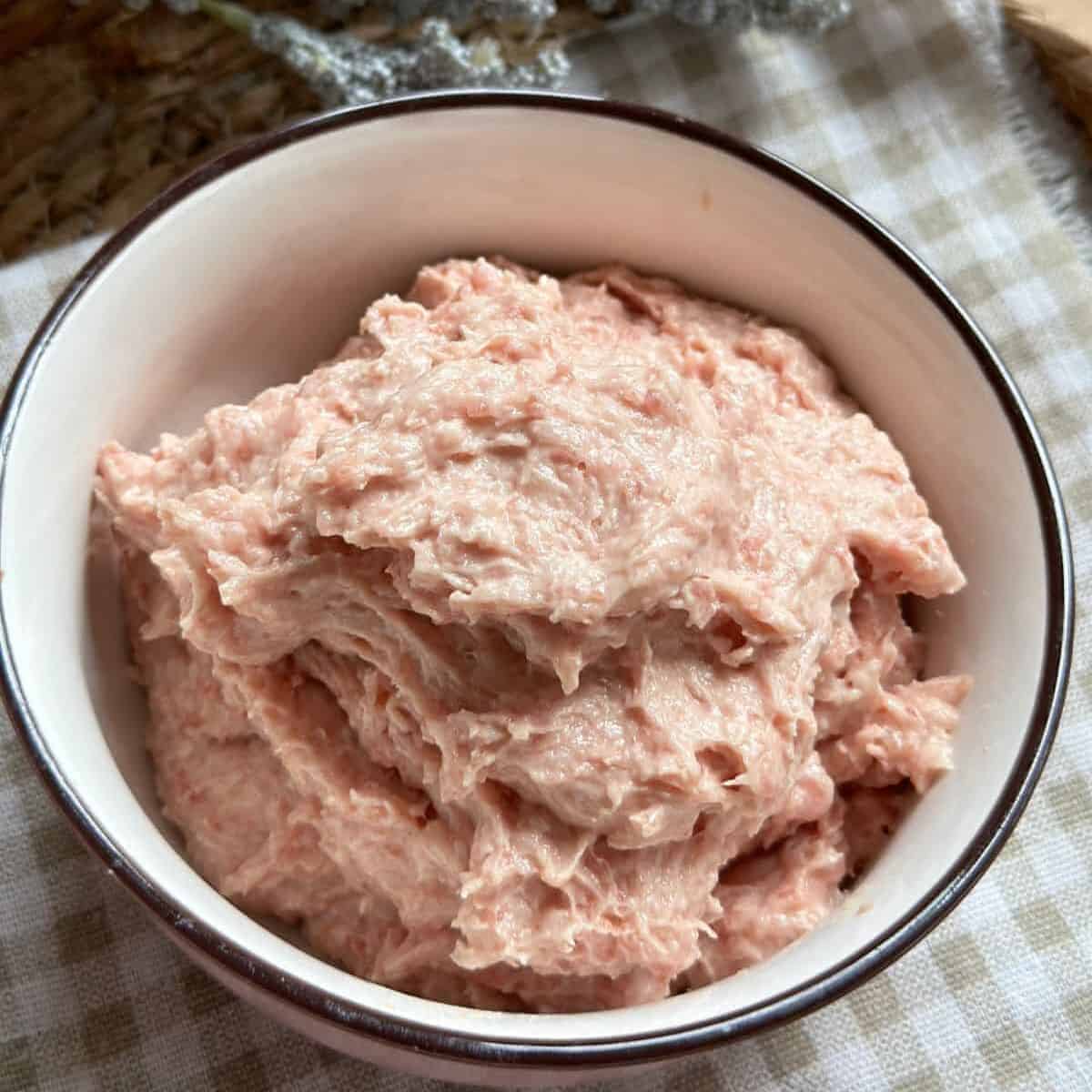
Servings: 4 people
Equipment
- 1 Food Processor (or 1 stand mixer with the flat beater attachment)
Ingredients
- 1 pound ground pork (450g)
- 1½ tbsp fish sauce
- 1 tsp chicken powder
- 2 tsp sugar
- 2 tbsp potato starch (tapioca starch, cornstarch)
- 3.5 tbsp cooking oil
- ½ tsp baking powder (Alsa or Dr. Oetker)
- ½ tsp garlic powder (or onion powder)
- 4 tbsp water
Instructions
Prepare the meat:
- In a bowl, combine the ground pork with all the other ingredients by hand. Don't mix for too long since your hand's temperature could heat the pork mixture.
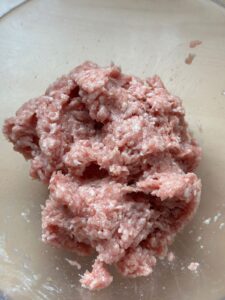
- Transfer the mixture into a freezer-safe plastic bag or a metal baking tray.. Spread the mixture evenly to form a pork patty about 0.4 inches (1 cm) thick.
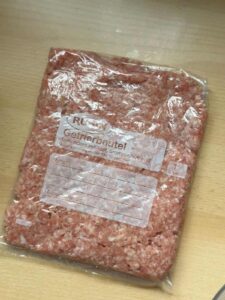
- Leave the bag of meat in the freezer for 3-4 hours until it's semi-frozen. If you can't make your Giò Sống on the same day, leave it in the freezer. Before grinding, allow it to sit at room temperature for 1-1.5 hours until it reaches a semi-frozen state.
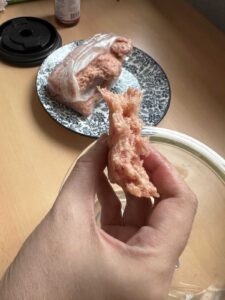
- Before grinding the meat, use scissors or a knife to cut the semi-frozen pork patty into pieces.
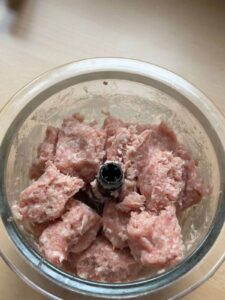
With a food processor (for a small batch of 0.4-0.7 pounds or 200-300 grams, my food processor is 800W)
- Pulse at the lowest power to grind the pork. After 2-3 pulses, scrape the sides of the bowl and push any meat that's stuck to the blades.
- Once you've pulsed around 10 times, you can increase the power level and pulse for 7-10 seconds. Be sure to stir the meat and scrape the bowl occasionally.
- When the paste appears smooth, paler, and fluffy, it's ready. When you use a spoon to scoop the pork paste, it should stick to the spoon.
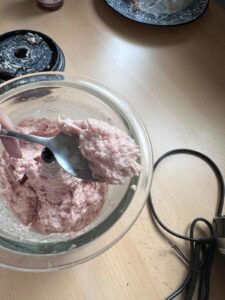
- Transfer the first batch of pork paste to a bowl and continute with the remaining meat.
- To enhance the elasticity and springiness of your pork paste (optional), you can "knead" it using the following method, which my mom taught me: Use a spoon to whisk the pork paste, spreading it to the sides of the bowl. Repeat these steps for about 10 minutes.
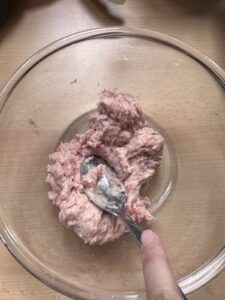
With a stand mixer (for a larger batch of 1.1-1.7 pounds or 500-800 grams)
- Beat the pork mixture on the lowest speed for 2 minutes.
- Beat the mixture on medium speed for 3-5 minutes.
- Finally, increase to the highest setting and beat for another 3-5 minutes.
- The paste is ready when it looks smooth, paler, and fluffy. When using a spoon to scoop the pork paste, it should cling to the spoon.
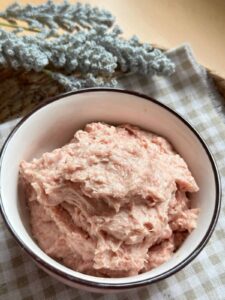
Notes
Key point: always keep your meat CHILLED
- If you're making it in 2-3 batches, store the next batches in the fridge, and ensure that the ready batch of giò sống is also refrigerated.
- Condensed water should always be present on the outside of your work bowl. If it's not, stop immediately and place the bowl with the meat in the fridge for 30 minutes before continuing.
- If you can, chill your work bowl in the freezer for 15 minutes.
- Don't overwork your food processor, especially when its motor is at the bottom and in direct contact with the pork paste. If the motor becomes too hot, pause immediately and refrigerate the bowl with the meat until it cools down and can continue processing.
- You could use a meat thermometer to monitor the temperature of the pork paste. If it exceeds 41°F (5°C), pause and refrigerate the bowl with the meat for 20-30 minutes.
Tried this recipe?Let us know how it was!